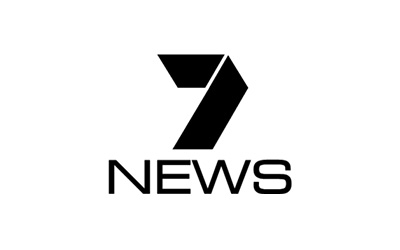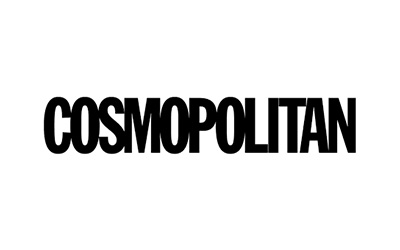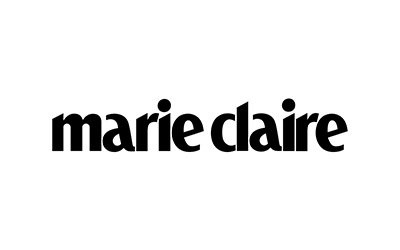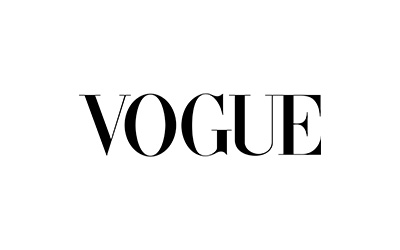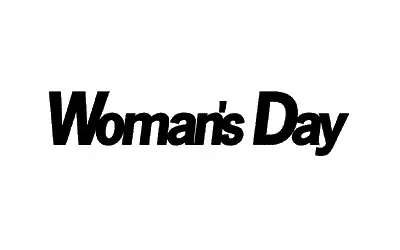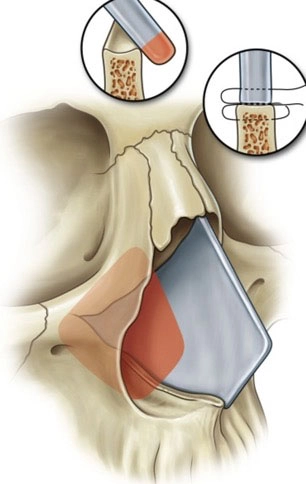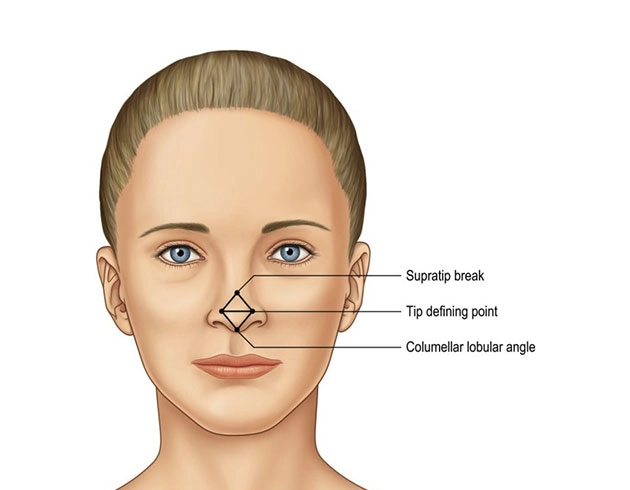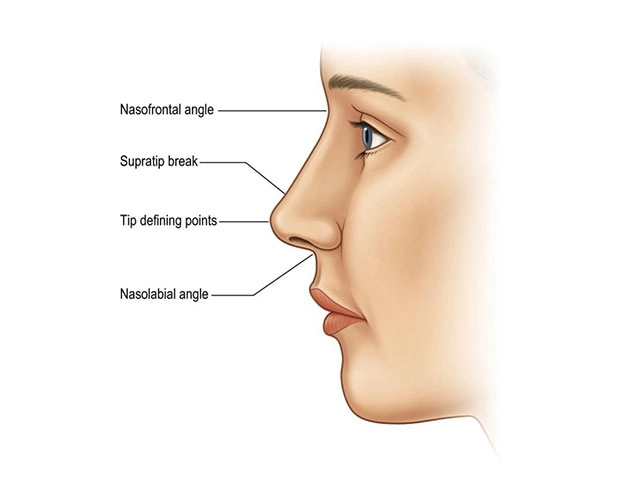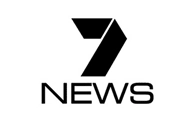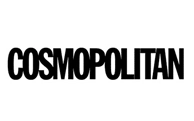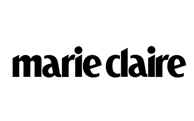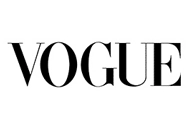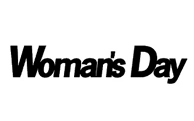Rhinoplasty Surgery or Nose Job
If you want to improve your nasal profile and be comfortable from every angle then a Rhinoplasty will be the solution. A Rhinoplasty will give you the nose that you always wanted (risks do apply and these will be discused with you).
The nose is the focal point of the face. The structures of the nose are in close relationship with the chin and the eyes, making the nose an important facial characteristic. When the nose is too big or too small, has an unruly bump, or lacks definition, it can often disrupt the entire facial harmony. Those who are unsatisfied with their nasal appearance may be considering plastic surgery to reshape the nasal structure. Rhinoplasty is a common procedure performed to correct the cosmetic concerns of the nose.
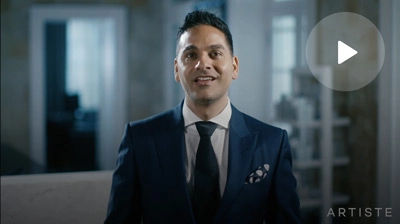
Video: Learn about Rhinoplasty
Learn about the types of Rhinoplasty procedures Dr Jack Zoumaras offers and why patients commonly consider a Rhinoplasty.
Model featured in photography
What can be achieved?
Improved Nasal Contours
Rhinoplasty is performed to reshape and resize the nose to create a smoother, more defined nasal structure. Whether a patient wants a smaller nose, to correct a crooked septum, or to remove a dorsal hump, Dr Zoumaras will employ a customised procedure for each patient. Patients can expect a better-defined nose with a more proportioned defined nasal profile.
Better Facial Symmetry
Since the nose resides in the middle of the face, it isn’t surprising that it affects the entire facial appearance. Dr Zoumaras can make small changes to the nose by addressing the nasal tip, nasal dorsum, and bone/septum. Once the nose is structured into the desired shape, many patients will notice how small alterations to the face can create better facial symmetry.
Being Comfortable
Many people may not feel confident showing off their face, especially taking pictures, when they are unhappy with the appearance of their nose. After the appropriate corrections are made, patients will be more comfortable about the transformation made to their entire facial appearance. They can take pictures knowing they have a nose that doesn’t stand out but rather blends in with the rest of their facial appearance.

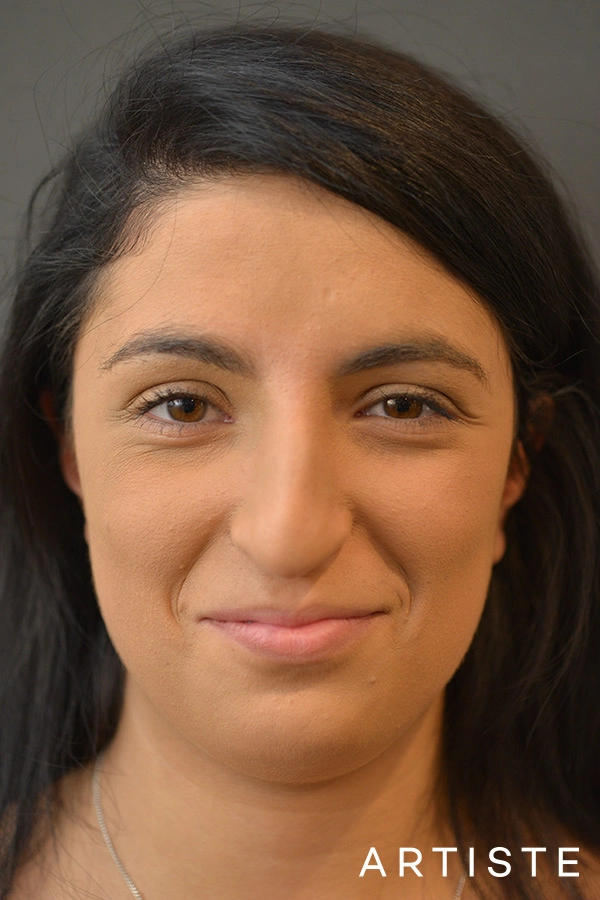
26 Year Old Female Full Rhinoplasty
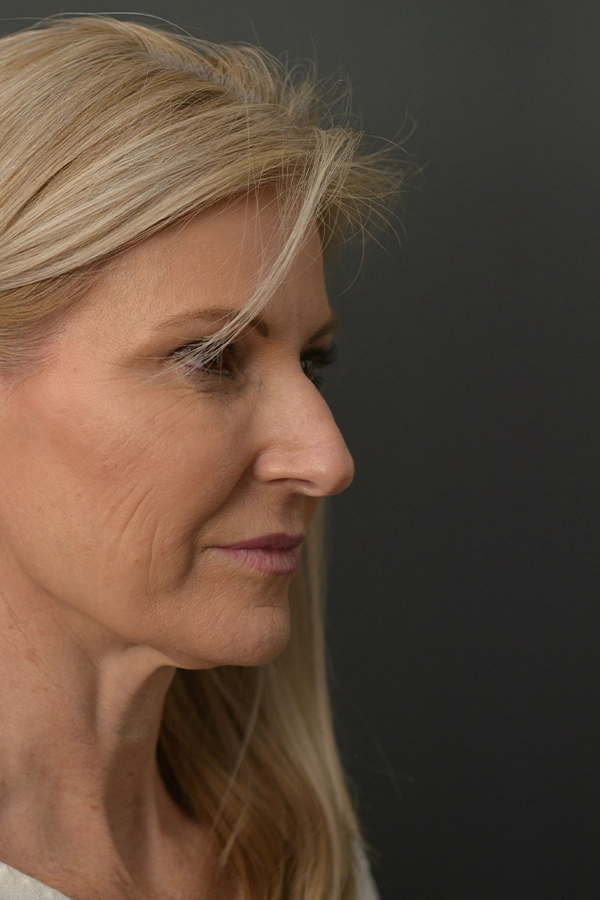
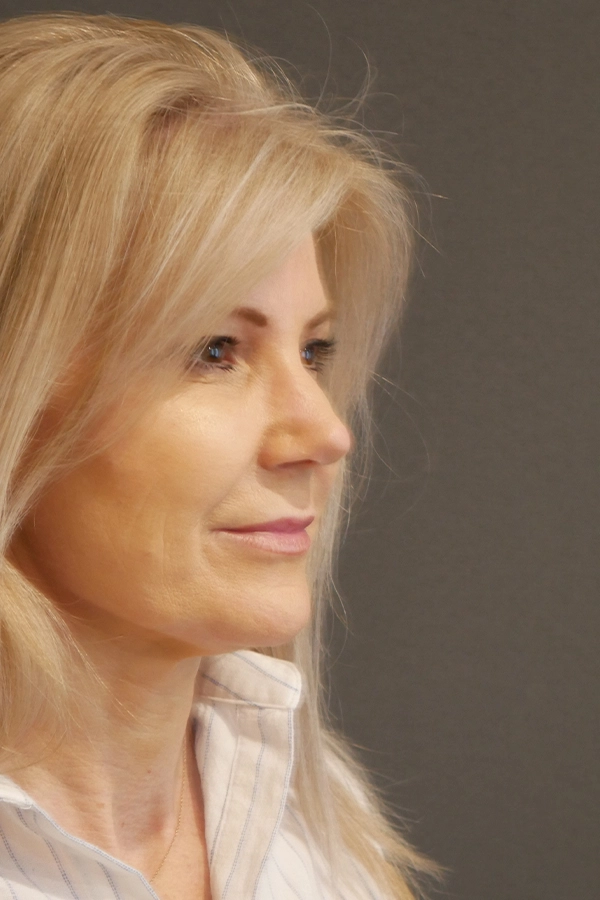
55 Year Old Female Rhinoplasty
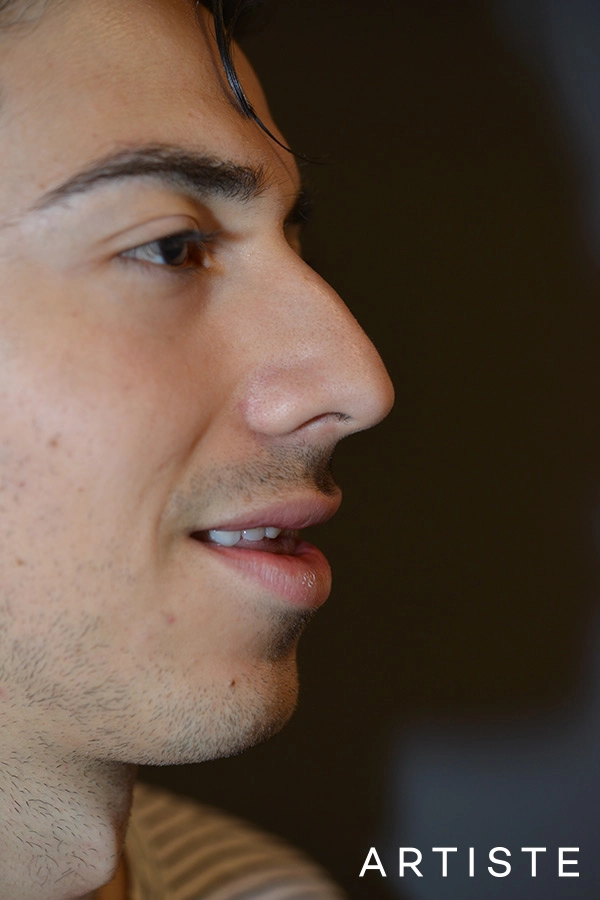
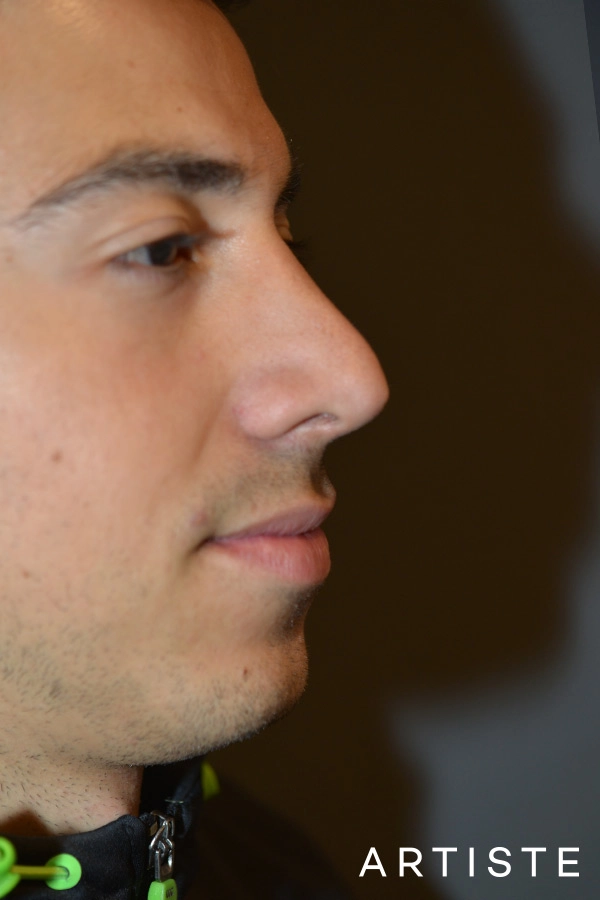
27 Year Old Male Rhinoplasty
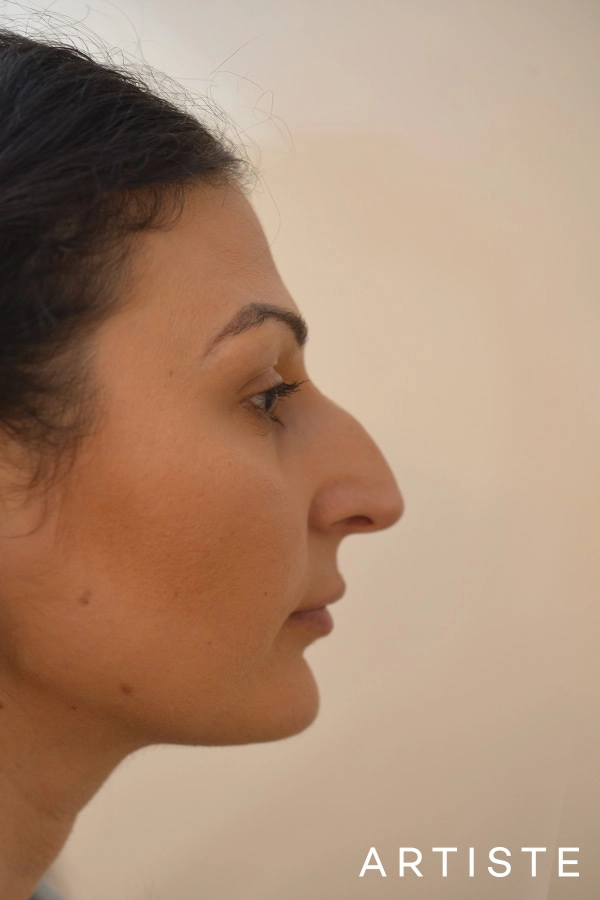
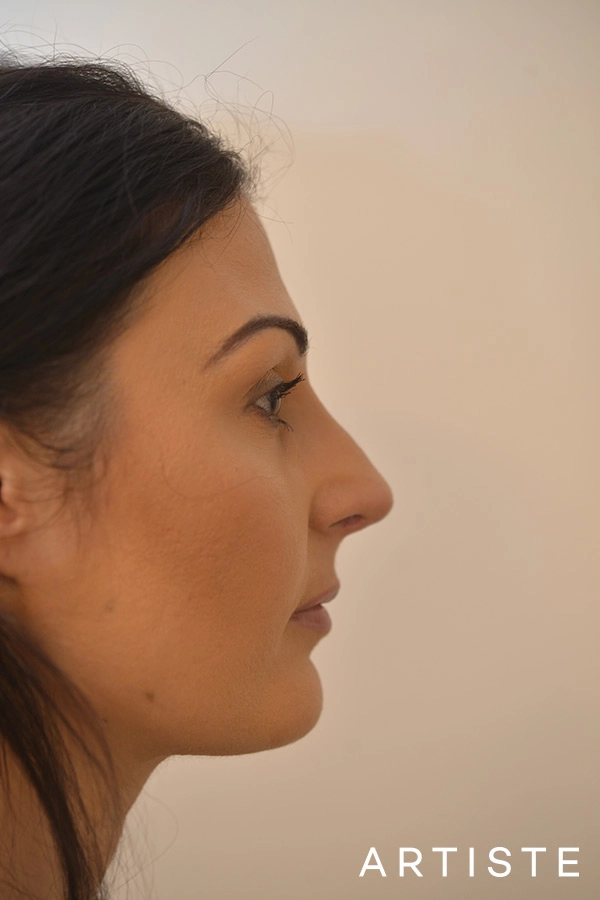
33 Year Old Female Rhinoplasty
PROCEdURE SNAPSHOT
2-4 hr Procedure
1 day or night in hospital
2 weeks unsociable
Qualified facelift plastic surgeon:
- World-trained Dr Jack Zoumaras
- Qualified Anaesthetist, Accredited hospital
Results: Refine your tip, remove the nasal bump, improve breathing, straighten nose and re shape your tip.
Investment for yourself
Rhinoplasty has risks that include breathing issues, asymmetry of the tip or dorsum and more
You will feel:
Model featured in photography

Rhinoplasty Surgery Procedures
At Artiste Plastic Surgery we offer the following Rhinoplasty Options to help you realise and have confidence in the Profile and Shape of your nose:
Bridge of Nose
Our Rhinoplasty procedure reduces the size of your dorsal hump (side of the nose) to improve your profile and give a straighter appearance.
Bridge and Tip of Nose
This Rhinoplasty shapes the dorsum as well as refines your tip to create a straighter bridge with a supra tip break and more defined tip..
Total Nose
Our Total Nose Rhinoplasty will shape the dorsum, refine the tip, reduce bulbosity and increase or decrease the tip projection to give you the nose that you have defined during the consultation.
Total Nose Plus
Our Total Nose Plus Rhinoplasty is reserved for those patients that have had a Rhinoplasty and require revision (Secondary or Tertiary Rhinoplasty) or need a reconstructive Rhinoplasty. These patients need cartilage grafting often from the rib and the surgery is a little longer so we can restore the pleasing features of your nose.Rhinoplasty Surgery or Nose Job Technique
- A small incision is made across the columella between the nostrils.
- The nose is fully open, allowing for better visualization of the nasal structures.
- This technique is used when an extensive alteration, such as significant nasal tip work, is required.
- An open approach is utilised for extensive nasal work and revision surgery.
- An internal incision is made inside the nose.
- There is no external skin incision needed, so any scarring is completely concealed.
- Through the incisions, the structures of the nose can be reshaped and resized to achieve the patient’s desired outcome.
- A closed incision is an option when only the dorsum needs to be addressed.
- Asian noses are inherently smaller with less projection.
- During Asian rhinoplasty, the nose is generally made larger to achieve aesthetic balance with the rest of the facial features.
- The dorsal surface is augmented, and cartilage or implants are used to augment the nasal appearance.
Know more about our Asian Rhinoplasty procedure here.
A revision or secondary rhinoplasty is surgery on the nose after a primary rhinoplasty. Rhinoplasty is delicate surgery on the tiny structures that make up the nose, and sometimes revision surgery needs to take place to further refine the tip and dorsum and assist with the functional side of breathing. This can occur more commonly with rhinoplasty surgery, as the primary surgeon often does less to the nose because even slight changes can have a significant impact.
As a Rhinoplasty expert Dr Zoumaras performs a septoplasty in every Rhinoplasty procedure. Some patients require the septoplasty for functional breathing reasons but all patients benefit from a septoplasty.
A septoplasty involves reshaping the septum which can be important for breathing.
Dr Zoumaras performs a formal submucous resection of the septum in order to straighten the septum and improve breathing. The septoplasty increases the diameter of the nasal passage and when combined with spreader grafts can help open the interval nasal valve.
Patients with a crooked nose or deviated septum apart from the obvious aesthetic deformity have part of the nasal passage blocked. By removing some of the septum. The septum is then able to be manipulated and straightened . The cartilage removed from the septum is then used for spreading grafts to aid breathing and of course to re-shape the nose at the tip.
The turbinates are a pair of bone lined by mucosa that form the lateral boundary of the internal nasal passages. In some patients the turbinates are enlarged and reduction in the size of the turbinates will open the lateral nasal passage to increase the nasal airflow by minimising the obstruction. Functionally the turbinates are present to humidify air.
The turbinates are reduced in size by submucous resection or out fracturing of the bone.
When combined with septoplasty, the nasal airway will increase in size and minimise turbulence and obstruction.
Surgical Information
Common Concerns
A splint (internal and external) may be placed over and/or inside the nose to hold the nasal structures in place for proper healing for seven to 10 days. Patients should limit their activity, avoid touching the nose, and keep the head elevated. Nasal packing may also be used for additional support. There will be some swelling and bruising, the face may be puffy, and the eyes may be swollen. Cold compresses can be used to minimise swelling and reduce pain. Patients should refrain from strenuous activities for several weeks or until the doctor has cleared them.
Open rhinoplasty does result in some scarring, but many patients will notice it is minimal and will become less noticeable over time, if visible at all. Closed rhinoplasty scars will not be visible at all since they are concealed within the nose.
Dr Zoumaras is a highly experienced plastic surgeon and customises every procedure to the individual patient. The cost of surgery will depend on the technique employed, anaesthesia and operating costs, and the extent of the surgery.
Minimal pain and discomfort are normal following surgery. Patients should expect some soreness from the swelling and bruising at the surgical site. Pain can be managed with prescribed medication.
Model featured in photography
FAQs
Yes. The nasal length and projection can be shortened as required.
A Non surgical rhinoplasty involves placing filler either side of a nasal hump to give the illusion that the nose is straight with no bump. This sort of Rhinoplasty will lengthen the nose.
Aaugmentation Rhinoplasty with silicone or with your own cartilage can be used to create a stronger nasal bridge in the Asian nose.
Likewise an alar base reduction and bulbous tip reduction can be done in a African American nose.
Your air entry will be assessed when having a Rhinoplasty and if necessary your breathing is addressed. A septoplasty and turbinoplasty can be performed as part of your Rhinoplasty to improve breathing.
A subtle tip rhinoplasty or removal of a bump from your nose is possible without changing the overall shape or projection. Your nose may also be straightened. If all you want is a small change then your nose will not look different.
As a Rhinoplasty expert Dr Jack Zoumaras will ensure that your nose matches your face and desires.
If you desire your nose to look more different then this is possible also.
A closed Rhinoplasty is not offered at Artiste. As a master Rhinoplasty Surgeon Dr Jack Zoumaras, like other world wide experts, has moved on from performing the out-dated closed rhinoplasty. This is primarily because you cannot get control of the tip without opening the nose.
Yes a tip Rhinoplasty is possible. We can refine the tip, make it less bulbous and change the position of the tip.
A Rhinoplasty will be uncomfortable for the first two days and then improve. After this your nose will feel heavy and congested like you have a head cold. Symptoms improve after 5 days and most of our patients do not take any pain medication after 7 days.
The shape of your nose will be noticeable on profile and from the side immediately. We often take photographs on tables to show you.
The nose then swells and the tip takes the longest to settle down. You will see a positive difference after 2 week but the nose will still be swollen. It is expected that the final shape will take place after 12 months.
If a revision is required Dr Jack Zoumaras will discuss the process in detail. Often because there is higher scarring, and less available cartilage, a cartilage graft may need to be performed. This is because it is most important to ensure the nasal base and foundation is strong before then adjusting the nose.
For simple revisions a cartilage graft is not necessary.
Dr Jack Zoumaras spends up to an hour during the first consultation to assess your nose and make recommendations. A further follow up consultation is organised to make sure we are on the same page. Medicine and Surgery is not black and white and following your surgery if you are unhappy with the shape of your nose we can discuss a revision. It is important to note that the revision rate for Rhinoplasty is 10% worldwide.
The nasal splint is applied during your surgical procedure, and you will be required to wear it between 7-10 days based on your surgery.
Your nose will be well supported with your own cartilage during the surgery so it is not going to be damaged if you bump your nose once it is healed at 6 weeks. We have had many of our patients knock their nose after a Rhinoplasty (especially if they have toddlers, or from accidental contact at a workplace) and there has been no issue. If you do bump your nose however, we advise you to attend a follow up appointment so we can assess the nose ASAP.
In the first week after your Rhinoplasty a splint is used to protect the nose and it is then advised to avoid contact for 6 weeks as the nose is healing.
You can go for short walks after 7 days and then jog for the next two weeks followed by running after 4 weeks. After 4 weeks you may go back to light physical exercise (hydraulic weights preferable). Any high impact classes or F45 classes, you need to wait between 8-12 weeks based on your individual recommendations.
A Rhinoplasty will take two weeks for a near full recovery. Most of our patients return to work or university after two weeks.
A Rhinoplasty can be done as Day or Overnight surgery, depending on each case and individual. The expected downtime is 14 days.
Everybody would love to know the cost of a Rhinoplasty before embarking on surgery, but this is difficult to ascertain, much like it is to get a quote on renovating your kitchen without a builder or designer measuring the dimensions of your kitchen and then asking what appliances and materials that you would like. For a Rhinoplasty the many variables include breathing issues, revision surgery, and if anything needs to be done to the alar and tip of the nose. These are technical factors that must be taken into consideration. Other factors include health insurance, possible medicare rebates and the certain nuances with one's nose. Dr Jack Zoumaras at Artiste Plastic Surgery, is a world acclaimed Rhinoplasty Surgeon having been invited to prestigious national and international meetings. He also regularly performs Rhinoplasty procedures, around 2-4 procedures per week. The guideline investment to get the nose varies from $17-22k for the surgical fee alone. Hospital and anaesthetic fees to keep you safe are outlined here.
Rhinoplasty is commonly combined with other procedures such as eyelid surgery, facelift surgery, and chin implants for overall facial rejuvenation.
As with any surgery, there are some risks involved with rhinoplasty. Some potential complications include:
- Infection
- Bleeding
- Bruising
- Difficulty breathing
- Scarring
- Poor wound healing
- Skin discoloration
Rhinoplasty is surgery. Patients should be prepared knowing that results are not immediate. The recovery process following surgery can take up to one year before all residual swelling subsides. However, once full results are achieved, patients can expect to enjoy their results for many years.
No; after surgery, you will be able to return home. It is important that you have a designated person to drive you to and from hospital and care for you for a few days after your surgery. In some cases, you may need to remain in hospital for one night.
Patients who are unsatisfied with the appearance of their nose may be ideal candidates for rhinoplasty. It is important that patients are in good health, do not have any serious medical conditions or illnesses, and have realistic expectations.
As Seen On
